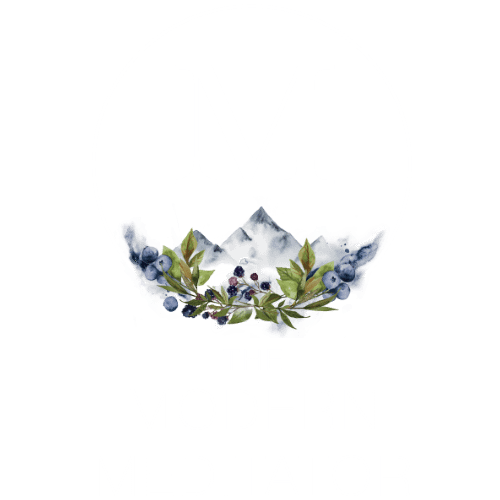The emotional skills we never learned in school
I can still remember my first day of school. My prep teacher Mrs Buckle had us draw a mouse out of the letter ‘e’. Some whiskers at the point, some ears on the top, and some little feet across the straight, and voila – an instant imaginary pet.
What else did we learn in school? How to read, how to count, how to play sports, how to play an instrument. We’d categorise subject matter into groups (e.g. verbs, nouns and adjectives) or we’d memorise times tables to song.
But did we ever learn to categorise our emotions by function, and to name all their subtle variations?
Nope. Nada. Not that I remember.
Even the Buddha was mindful of emotions all those years ago, naming them as one of the four foundations of mindfulness (in addition to body, thoughts, and states of mind.)
Emotions bring us the data we need to communicate and make decisions. They’re a key intelligence that help us make our way in the world, live with others, and thrive as a species.
And yet, all the trouble that “being emotional” seems to bring – at the extreme end, violence, suicide, and addiction – could be prevented if we just knew what all the emotions were and were for.
So here’s a beginner’s guide to emotions, so that we may stop feeling at their mercy, and start to have a more harmonious relationship with ourselves and with others.
A Beginner’s Guide to Your Feelings
This article references the unique perspective and lifelong work of emotions researcher and trauma survivor, Karla Mclaren. I highly recommend you check out her books The Language of Emotions, The Art of Empathy, and Embracing Anxiety, or learn more about her body of work at Dynamic Emotional Integration.
The Four Families of Emotions

First things first. How can we categorise emotions?
Broadly speaking, Karla has identified four families, or, because I enjoyed Game of Thrones, four ‘houses’ of emotions:
- Anger
- Fear
- Sadness
- Happiness
Unlike Game of Thrones, however, these family names are thankfully more recognisable than Targaryen or Baratheon and can be allies rather than enemies once we learn what they’re for.
17 Main Emotions
Let’s now take a look at the 17 main emotions belonging to each of these houses.
Anger ⤑
The anger family contains:
- Anger
- Apathy + Boredom
- Shame + Guilt
- Hatred
Fear ⤑
The fear family contains:
- Fear
- Anxiety
- Confusion
- Jealousy
- Envy
- Panic + Terror
Sadness ⤑
The sadness family contains:
- Sadness
- Grief
- Situational Depression
- The Suicidal Urge
Happiness ⤑
The happiness family contains:
- Happiness
- Contentment
- Joy
Four families, 17 emotions – did you catch how only three of them are the happy ones?
Emotional Intelligence 101
Most of us have never really examined what our emotions are, what their function is, and how they might actually serve us to make decisions and our way in the world.
There are a lot of mixed and unhelpful messages about emotions in our society, ranging from spiritual memes that push a toxic positivity agenda; to the local GP who may prescribe a pill to alleviate uncomfortable physical symptoms (such as a a racing heart for anxiety) but that leaves you believing your emotions are a medical disorder.
Spirituality and medicine definitely have their place but when it comes to emotions, getting our facts straight is a good place to start. As Karla quotes in her book The Language of Emotions, “Suffering will cease when understanding has been reached.”
So here’s how I’ve come to understand these 17 emotions, so that we indeed, may suffer less.
Anger – The House of Boundaries

The collection of emotions that belong to the anger family are all about boundaries, rules, and behaviour – our own and others’.
UNDERSTANDING ANGER
What anger is for: Anger alerts us that something we value has been broken, either for ourselves or on behalf of others. Anger arises when a boundary has been crossed.
Example: Your neighbour has a party and plays loud music that keeps you awake until 3am. Anger arises because you value sleep and your sleep has been disrupted.
The action anger wants us to take: Anger wants us to protect our values or the values of others by setting a boundary that says this is what we stand for. It wants us to be vulnerable enough to relay to another what it is that we value.
UNDERSTANDING APATHY (+ BOREDOM)
What apathy is for: Apathy comes forward in place of anger when our position of power is limited and our opinion doesn’t matter. It’s the emotion that says, “whatever,” dead-pan, waiting for the power dynamics to change.
Example: Your 15-year-old daughter is slumped in the armchair on her iPad. You remind her for the third time that she still needs to unpack the dishwasher, fold the laundry, do her maths homework, and make her lunch. She doesn’t want to do any of these things but because she’s a child and you’re the parent, she knows expressing her anger won’t do her any good – so apathy steps in to say ‘whatever’ in permissible protest.
Action apathy wants us to take: Apathy wants us to turn towards that which we do find important and where we have some say and agency.
UNDERSTANDING SHAME + GUILT
What shame is for: Shame helps us abide by our own morals and values, or the values and expectations of others.
Example: You accidentally send a gossipy text message to the very person you are gossiping about. Shame arises because you value not hurting others’ feelings.
Action shame wants us to take: Shame wants us to recognise our behaviour and apologise or make amends if we agree that the value we’re upholding is authentic and true to us today. If shame arises in response to an outdated or unworkable value (such as perfectionism), then it’s the message/value that needs tweaking, changing, or abandoning. The practice of “burning contracts” can help with this.
UNDERSTANDING HATRED
What hatred is for: Hatred helps us identify qualities in another that we have said is “not me”. It helps us look inward at ourselves to examine: what about this person is so riling that I have banned it from my psyche? Is there a portion of this quality that I could stand to reintegrate to make me whole?
Example: A new manager starts at your workplace. You can’t stand how full of herself she is; how she’s constantly pumping up her own tyres. Hatred arises as you think ‘I would never be so conceited.’
Action hatred wants us to take: Hatred wants us to identify what riles us up about our enemies, look in the mirror, and perform the “shadow work” of seeing how we ourselves can behave similarly; or where we might stand to benefit by integrating that quality back into our psyche.
Fear – The House of Instincts & Intuition

The emotions that belong to the fear family are all about instincts and intuition.
UNDERSTANDING FEAR
What fear is for: Fear helps us focus and access our instincts during times of change and novelty.
Example: You’re driving down your neighbourhood street when a car reverses out from a driveway without looking. In a split second your fear – your instincts – kick in so that you push down on the brakes to avoid hitting the car.
Action fear wants us to take: Fear wants us to take any action appropriate to the situation. Stop, run, freeze! duck, shout. Fear wants us to listen to our intuition.
UNDERSTANDING ANXIETY
What anxiety is for: While fear arises in the present moment, anxiety is a future-focused emotion that alerts us to things we need to be preparing for that haven’t yet arrived, i.e. deadlines.
Example: You’re getting married in three months’ time. You still need to sort a suit for your partner, write your vows, pay the final deposit on your reception venue, and send the invitations. Anxiety arises to let you know these tasks need to be done.
Action anxiety wants us to take: While anxiety wants us to do all the things, when there are simply too many things, it’s usually satisfied if we show we’re organised by writing a to-do list, delegating, or showing we’re organised in some small way.
UNDERSTANDING CONFUSION
What confusion is for: Confusion helps us take a breather when our to-do list has spilled over into overwhelm and we’re faffing around and can’t concentrate. It signals it’s time to take a break.
Example: You’ve got a busy day of tasks planned out at work, with two deadlines to meet. Then, your boss hands you an urgent third task that you also have to fit in, but the brief is vague and you don’t know straight up how you’re going to do it. You still staring at your computer for 5 solid minutes trying to think your way out of it, and then another 5 minutes passes by.
Action confusion wants us to take: Confusion wants us to take a break. It wants us to stop thinking our way out of a problem, focus on something completely different (perhaps something physical) and allow the time-out to reveal a new angle, idea, or solution.
UNDERSTANDING JEALOUSY
What jealousy is for: Jealousy’s job is to tap you on the shoulder when something is possibly amiss in an intimate relationship. A feeling of distrust or insecurity that your connection or loyalty is being jeopardised.
Example: Your partner of many years starts talking about a new work colleague, whom, within a short period of time, is referred to as their “work wife” by their colleagues. At first, you think it’s sweet, but then you notice your partner is on their phone more frequently, and although they’re not hiding any messages from you, your security about the new friend becomes wobbly. Is this relationship turning into something more?
Action jealousy wants us to take: Jealousy wants us to listen to our instincts and investigate whether a betrayal has indeed occurred, or whether our own sense of worthiness created by external messages and outdated beliefs needs examining. It wants us to use the anger inside jealousy to relate to our partner with vulnerability.
UNDERSTANDNG ENVY
What envy is for: Similarly to jealousy, envy taps us on the shoulder when something is amiss in a social or work situation. A feeling of unfairness or inequality that things like privilege, money, food, status, protection or belonging have been distributed away from us or others in an unjust way.
Example: You’ve been at your job for many years and you learn through the grapevine what new starters are earning for a similar role. Envy comes forth because that just doesn’t add up, both for yourself, and for other long-term colleagues you know are affected.
Action envy wants us to take: Like jealousy, anger is present in envy, even though it’s part of the fear (instincts) family. Tuning in to what you value is the first step, i.e. fairness and equality; and setting a boundary that says equality is important to you. Again as with jealousy, you can use the vulnerability in anger and the instincts in fear to make a decision about how to approach your manager. You can also turn inward to examine your own behaviour, performance, or sense of worthiness that came from your childhood or a trauma.
UNDERSTANDING PANIC + TERROR
What panic is for: There are two types of panic. “Immediate panic” arises when your life is in danger. It helps you fight a threat, flee from danger, freeze and be still or flock with others to safety.
“Frozen panic” arises when there are no threats to your physical safety now, but in response to a past trauma that has not been addressed or healed.
Example of immediate panic: You and your family are sound asleep until you hear the smoke alarm sound. Stirring from unconsciousness you are initially confused, but when you smell the smoke, immediate panic steps forward with the surge of adrenaline that you need to wake up your partner and kids and escape to safety.
Example of frozen panic: You’re away on a camping vacation in a small riverside town when a storm starts to gather. There’s been a lot of rain lately and minor flooding on some of the local roads. When you hear the rain increase in intensity, you’re overcome with (frozen) panic, sensing you could become “trapped” in this location. It relates to a time in your childhood when you were left in a hot car for hours and couldn’t get out.
Action panic wants us to take: In the case of immediate panic, follow your instincts and fight, flee, freeze or flock with others to safety. You’ll barely need to think – panic will make those split second decisions for you.
Where frozen panic arises – it’s time to work on unhealed traumas. There are many healing modalities for trauma including counselling, therapy, and somatic experiencing.
Sadness – The House of Release

The emotions that belong to the sadness family are all about stopping and letting go.
UNDERSTANDING SADNESS
What sadness is for: Sadness helps us release or let go of people, ideas or situations that aren’t working for us. It helps us relieve built-up tension and come back to a place where we feel calm, flexible and fluid.
Example: You’ve been busy and anxious with a mountain of tasks to complete and a deadline looming. Your body is riddled with tension but you’ve been holding it together – so you think. Then a friend calls and asks if you wouldn’t mind having her son overnight so they can go to a concert. Normally that would be OK, but in that moment, the thought of one extra person to be responsible for tips you over the edge. You hang up the phone and burst into tears. Five minutes later you notice the tension has eased from your body, you feel more relaxed, and the idea of a sleepover doesn’t seem that bad after all.
Action sadness wants us to take: When we’re in a socially safe place, sadness wants us to break the dam. To cry. To allow the fluidity of tears to wash away tension, or at its softer level, simply let go of the things that need letting go.
UNDERSTANDING GRIEF
What grief is for: Grief helps us mourn that which is lost forever or never was.
Example: You and your partner have been trying to conceive without any luck. Years of trying naturally, and several rounds of IVF later you both come to the decision that a baby is simply not in your destiny. Grief arises to help you mourn and honour the child you will never have.
Action grief wants us to take: Grief wants us to make a sacred space to honour what has been lost. It wants us to feel into our bodies to know when our grief has come to its natural end. Making a “shrine” to what has been lost is one way to channel grief – creating a physical, separate space in your home where you place photos or objects of what has been irretrievably lost – and making regular time to visit and honour the shrine.
UNDERSTANDING SITUATIONAL DEPRESSION
What situational depression is for: Situation depression (as opposed to major, clinical, or bi-polar depression) arises to let you know something – a situation – is not working and needs to change or be reframed. It zaps all your energy so you can stop and tune into that which has drained your life-force.
Example: You’ve been working on multiple projects, burning the candle at both ends, while task-oriented anxiety was flooding you with adrenaline to meet your deadlines. As soon as you go on vacation, depression sets in – zapping you of all your energy. You can’t even summon the energy to go to the beach!
Action situational depression wants us to take: In this example, depression wants you to stop, and rest from pushing yourself so hard in your business. It’s taken your energy for a reason. There are many other situations that are depressing inducing – the pandemic for one! There are many actions you could take. Refer to Kara McLaren’s article on working through depression. It contains an excellent checklist to pinpoint where you could get help or make lifestyle changes.
UNDERSTANDING THE SUICIDAL URGE
What the suicidal urge is for: The suicidal urge helps us work out that something in our life must end – or “die” – with finality – but not our physical body. When a situation, idea, relationship or behaviour has become so unliveable that it must cease to exist. Period.
Example: You’ve been in an on-again off-again relationship with a narcissistic partner who gaslights you. Even though they’ve never been physically violent, your confidence and self-worth have taken a beating. You berate yourself for going back but you can’t seem to stop the cycle. Until finally, the suicidal urge steps in to end this behaviour with a “dead, flat no” as Karla describes. You make the decision to leave once and for all and you know you will never go back.
Action the suicidal urge wants us to take: Get help if you are considering taking your own life. (In Australia you can call Lifeline on 13 11 44.) Stop. Lean into that which must “die” – but not your physical body. Examine the relationship, behaviour, idea or situation that you can no longer tolerate at all. Work with a therapist to support you to find the intolerable thing.
Happiness – The House of Welcome

The emotions that belong to the happiness family are all about hope and celebration.
UNDERSTANDING HAPPINESS
What happiness is for: Happiness helps us enjoy the present moment in a delightful, playful way, and embrace the future with hope and optimism.
Example: It’s your birthday! People have been calling all day to wish you happy birthday. Your party is later on. As you blow up balloons, happiness arises to help you appreciate the good people in your life and get ready to celebrate.
Action happiness wants us to take: Happiness wants us to welcome it in when it knocks on the door naturally. It wants us to laugh, dance, smile, embrace, sing – whatever we’re urged to express in delight or celebration. When the time or moment has arisen, it wants us to let it go. It definitely doesn’t want us to hold it hostage while the other emotions are locked outside unable to perform their own unique tasks.
UNDERSTANDING CONTENTMENT
What contentment is for: Contentment helps us know when we’ve done a good job; when we’ve lived out our own authentic values. It gives us a pat on the back says, ‘well done.’
Example: You are doing your homework and it’s challenging stuff. You’d much rather be on TikTok or FaceTiming with your friends. But you put your phone in the other room, you hunker down and you concentrate. And voila! Something clicks. You actually get this now. A sense of pride (contentment) arises to reward you for being diligent.
Action contentment wants us to take: Keep living by our authentic values. Celebrate our wins. Savour the moment. And welcome the next big challenge.
UNDERSTANDING JOY
What joy is for: Joy arises when find ourselves in an expansive and heartfelt place; where we feel connected not just to other people, but all of life. It creates a sense of oneness with others or a full sense of immersion with an experience or idea.
Example: You head off on a silent meditation retreat with a bunch of strangers. You don’t know them and they don’t know you. You sit and meditate together, in silence, for several days. When silence breaks on the last day and talking resumes, you feel a sense of complete connectedness to these people who, even though you’ve barely spoken, are no longer strangers.
Action joy wants us to take: Welcome joy. Let it in. Let it pour through you. Then set it free.
It’s a Wrap!
So there you have a beginner’s guide to emotions. Of course, when you look at the list, you might wonder, well, where does disgust, or dread, or excitement fit into these families? Developing a nuanced vocabulary of emotion words is a great next step. Check out Karla’s free emotions vocabulary list to expand your emotional repertoire further and Jennifer Asdorian’s free emotions tracker to start recognising when your emotions are present.
And remember: “Suffering will cease when understanding has been reached.”





